“If you know the enemy and know yourself, you need not fear the result of a hundred battles.”
– Sun Tzu (The Art of War)
Aphids rank right up there with mosquitoes as the most hated local insects. They might not be as destructive as some other pests that we can face on occasion, but their persistence and sheer numbers often have us frustrated. Otherwise known as plant lice, we’re here to help gardeners deal with these creepy-crawlies when they invade.
All About Aphids:
With their overwhelming numbers, going up against aphids can feel like you’re fighting a war in your backyard. We call on the wisdom of Sun Tzu, the famous Ancient Chinese military general, strategist, and philosopher, to help us beat these pests when they show up in our yards. He explained that guaranteed military success comes from knowing your enemy. Before we get into how to kill aphids (don’t worry, we’ll get to that), it’s useful to understand a little about their life cycle and why they are such difficult pests at times.

Aphids are some of the most remarkably adapted pests your garden will encounter. Not only do they reproduce like crazy, building their population exponentially, but their eggs can overwinter, too. Aphids can reproduce both sexually and asexually, meaning they will almost always find a way to increase in numbers. In the spring, their overwintered eggs hatch into females that are often already pregnant with thousands more young aphids. Until the weather cools in the fall, all the aphids are female and can hatch dozens of generations in a single season. It only takes a week for an aphid nymph to mature and start their own families!
In the fall, aphids start hatching both males and females. Some of them even sprout wings and form black swarms in August and September. Once the weather cools, they attach eggs to your plants to overwinter, waiting to start the cycle again when the weather warms up.
Recognizing Aphids:
In almost every way, aphids are pretty easy to spot. They notoriously appear in clusters, favouring the tips of new growth or the undersides of leaves – especially on well-fertilized plants with lots of growth. The individual bugs are pear shaped, but could be nearly any colour including black, green, gray, spotted, or even furry! If you forget what they look like, just check the nearest petunia in the fall and we’re sure you’ll have a reminder waiting for you.
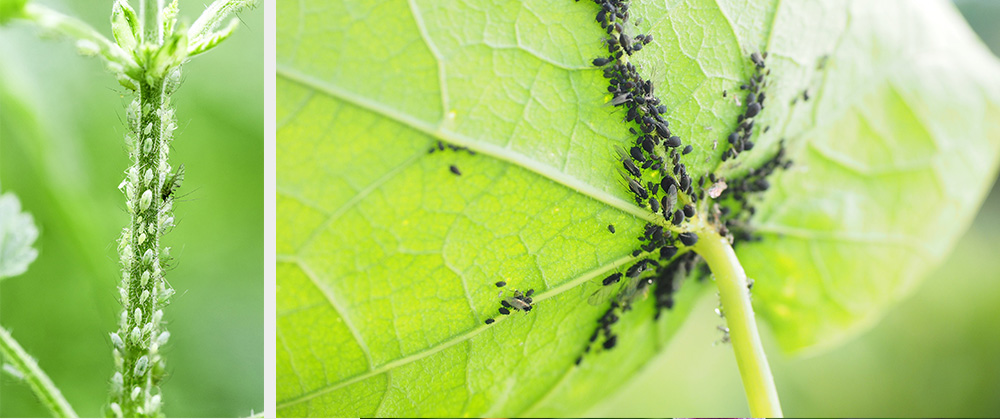
The Damage
Aphids feed on the sap of plants and are very good at what they do. They suck so much sap that they can be very destructive to your plants. You might notice that affected plants have yellow discolorations or wilted and curled leaves. Aphids can also pass along disease between plants, while additionally making your plants more vulnerable to fungus and mold.
Having large numbers of aphids will also make you more likely to see an increase in ants in your garden, as they like to “farm” aphids. Your plants won’t be happy with an aphid infestation, and it could invite more trouble the longer it lasts.

Damage Control – Killing Aphids
Fortunately for gardeners, aphids are like the twinkies of the insect world. While they might be mass-produced, they also have nearly nonexistent defences and almost anything remotely predatory in the insect world loves to snack on them. If you’re proactive enough, you can usually avoid chemical solutions to an aphid problem simply by encouraging the right predators and spraying aphids off the undersides of plants with a strong jet of water.
We love to use ladybugs to control our aphids. As long as your garden is offering a juicy aphid buffet you’ll have no problem keeping these helpful predators around. We might adore them for their cute spots, but ladybugs are cold-blooded killers that make short work of aphids. If ladybugs don’t work, the next good choice is applying some neem oil.
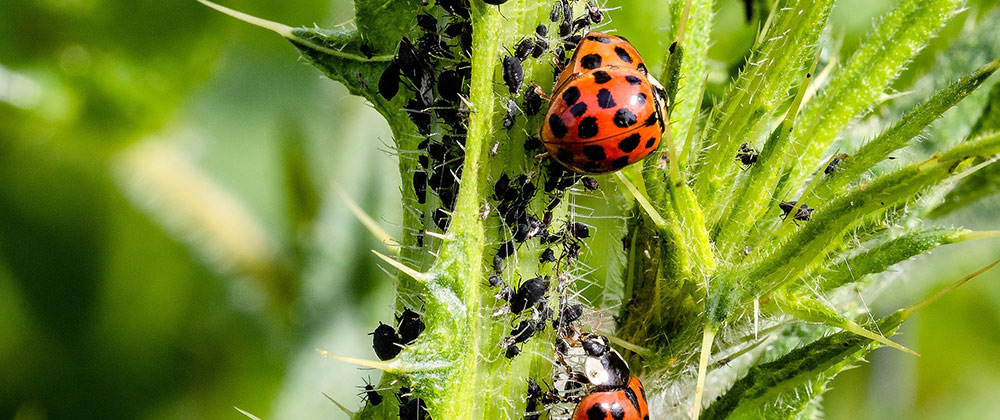
If the numbers are getting completely out of control, you might need to step up your defences to chemicals. Insecticidal soap is a moderately strong solution that shouldn’t wipe out everything in your garden. These soaps can be effective at killing aphids if you are diligent about reapplying them to interrupt their life cycles.
If things are really dire, we recommend picking up some pyrethrum. It’s the active ingredient in most pesticides, and will certainly kill your aphids – and anything else. Please keep in mind that this is an extreme method and it will wipe out all the good guys and the bad guys. The little and persistent aphids will probably bounce back a lot faster than the helpful predators, meaning that extreme pesticides might not always be a good long-term solution. Using strong chemicals is almost like a drug: they’re incredibly potent and they might make the problem worse in the long run.
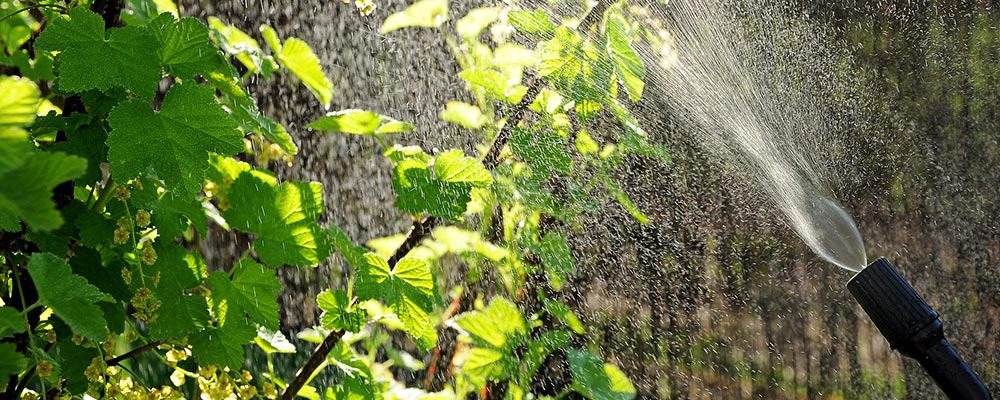
The overwhelming numbers of aphids that many of us see each year can be disheartening. It always seems like we are fighting an uphill battle to keep these little pests under control each year! With a few options of mild to moderate solutions, we’re hoping that gardeners can use a little knowledge and a tiny bit of firepower to finally get the upper hand in their battle against pesky aphids.




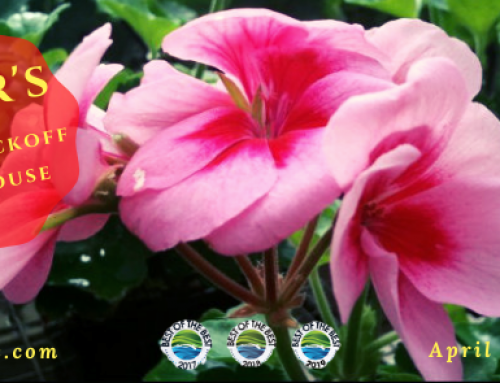
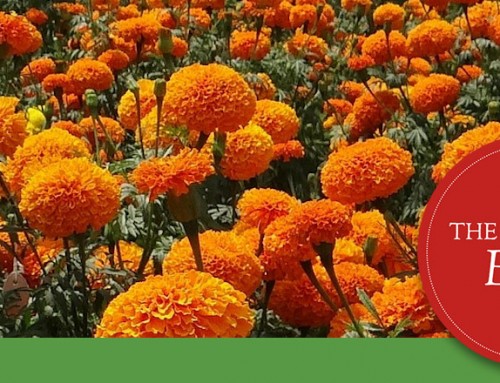
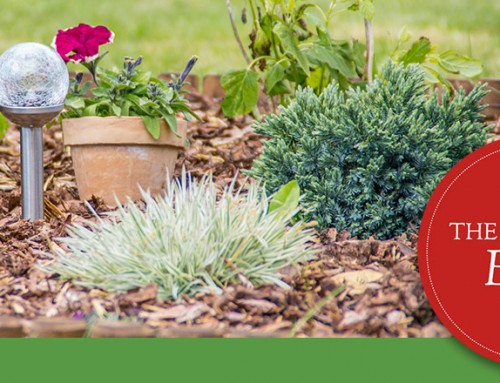
Leave A Comment